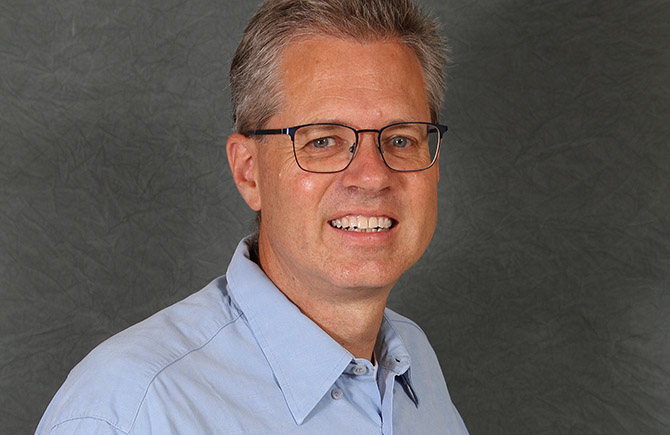LTH's Jubilee Professor for for sustainable and energy-efficient construction in place
He has arrived – the holder of the Jubilee Professorship donated to LTH by the Eliasson Family Foundation for the Development of Good Building Culture.
Evelina Lindén – Published 19 September 2023

Lund University is the leading university in Sweden for sustainable and energy-efficient construction. This is the opinion of Hans Eliasson, chairman of the Eliasson Family Foundation for the Development of Good Building Culture – which is why the foundation has chosen to contribute in many ways to Lund University’s work on sustainable construction. When LTH celebrated its 60th anniversary, the foundation donated SEK 10 million for an anniversary professorship. Recruitment is now complete, and at the end of August Pieter de Wilde arrived on campus.
How would you describe the focus of your research?
I am an expert in building science, with a focus on thermal aspects. My main research emphasis is on thermal building performance simulation, and its use in the building services and engineering community. However, I also have an interest in building performance monitoring in the actual day-to-day context which enables critical reflection on the validity of computational results, and their meaning in building operation and facility management practice.
This is embedded in a wide interest that covers all aspects of building performance. I am also known for my work on the ‘energy performance gap’: the mismatch between predicted and measured building energy efficiency. My paper in Automation in Construction from 2014 on the subject has been cited well over 1000 times. I am also the author of Building Performance Analysis, the major book on the subject published by Wiley in 2018.
How did your career as an expert in your field begin?
My career started with by studying architecture at TU Delft in the Netherlands. I was drawn into building physics by my key mentors, Marinus van der Voorden and Godfried Augenbroe. As they say, the rest is history.
Why did you choose to work here at LTH?
I have been working in the UK since 2005, but since Brexit the conditions have become difficult. I was looking for a post in the EU; after giving a keynote at a conference in Copenhagen a friend recommended applying to the opening for a professorship at Lund. The vacancy really suits my interests and the group that I am joining is an excellent fit, so I applied and am happy to now actually join LTH. In general, the working conditions and facilities in Sweden seem nice, and LTH has an excellent reputation. I am also happy to join a university that is investing heavily in new facilities, setting a trajectory to be at the forefront of scientific excellence.
What are your expectations of your role as a professor?
I’ve been professor at two UK universities (Plymouth and Strathclyde) so I am familiar with the role, which generally covers teaching, research and admin/service. My priority after joining LTH is to go after research funding, and setting up a couple of PhD-students and postdocs to work with me. I also need to do significant networking to establish myself in Scandinavia.
What are you most proud of in your career so far?
Probably the IBPSA “Outstanding Young Contributor Award” which I got in 2013. I am also proud of my PhD-students and the careers they are building all over the world – some stayed really local and are in my old group in Plymouth, with others going as far as Sydney, Australia.
What are you looking forward to working on?
I’m just hitting the ground, and I look forward to collaborate with the colleagues, having deep discussions, and do some joint work. I am also keen to get involved with the experimental side and our lab facilities.
Pieter de Wilde
- Title at LTH: Professor
- Department: Building & Environmental Technology
- Division: Energy and Building Design
- Expert in: Building performance analysis, building science / building physics, with a focus on thermal/energy aspects, building performance simulation, building operational conditions and control, including occupant behaviour and climate change, architectural design and decision-making processes, high performance buildings (HPB), building performance gap(s) between predicted and measured performance, the use of building simulation/intelligent computing in the architectural design process, building services and energy saving building components – to mention some.
